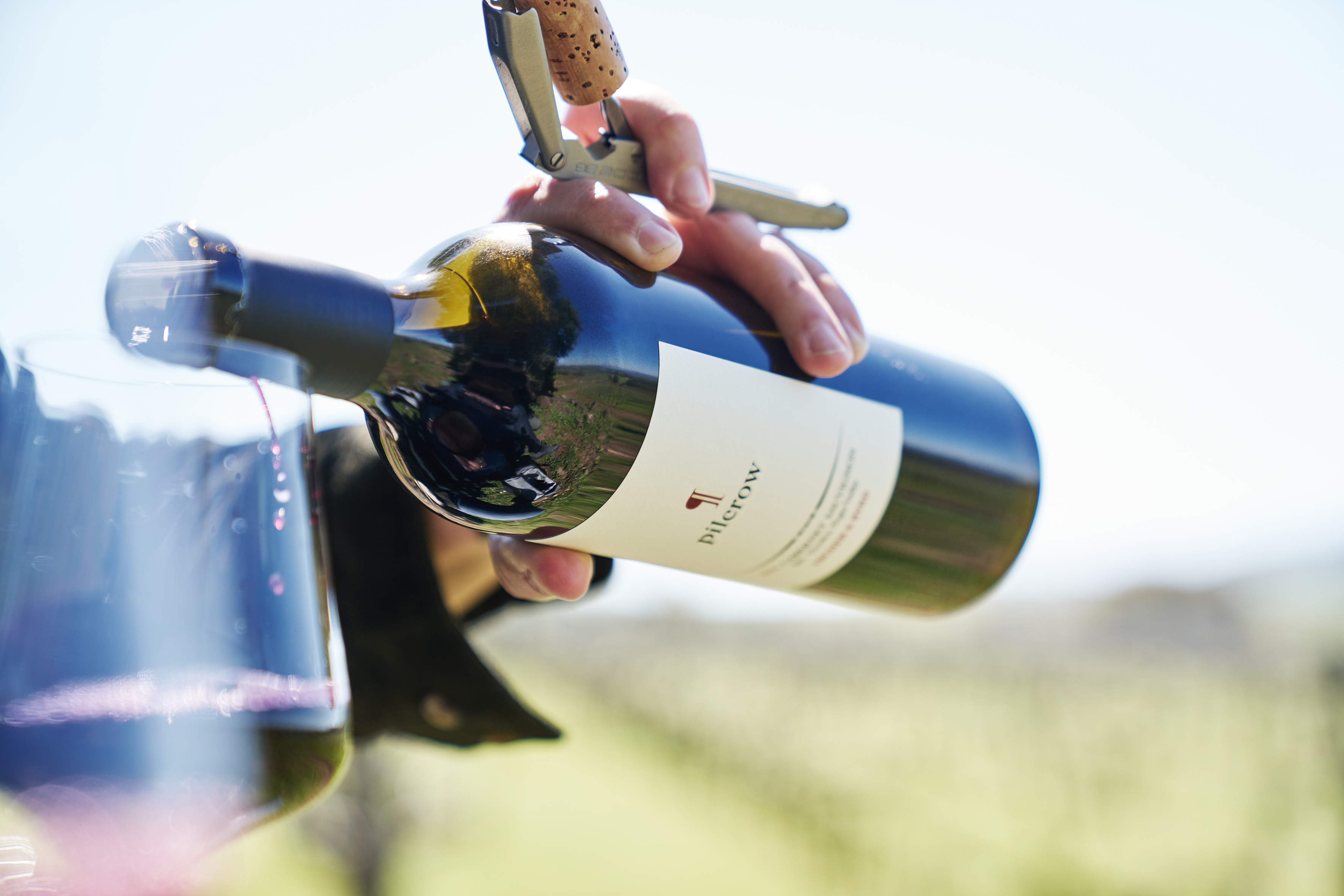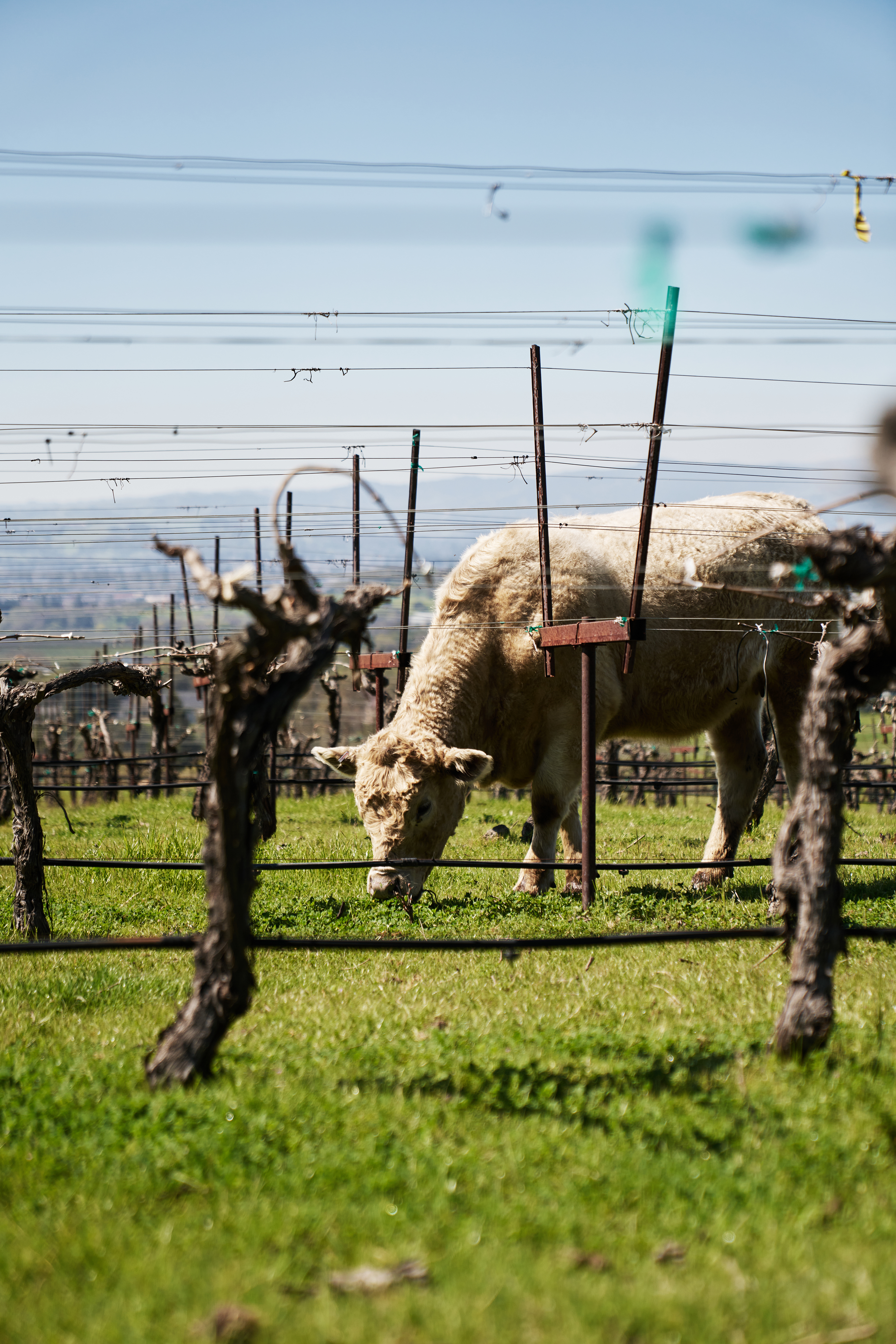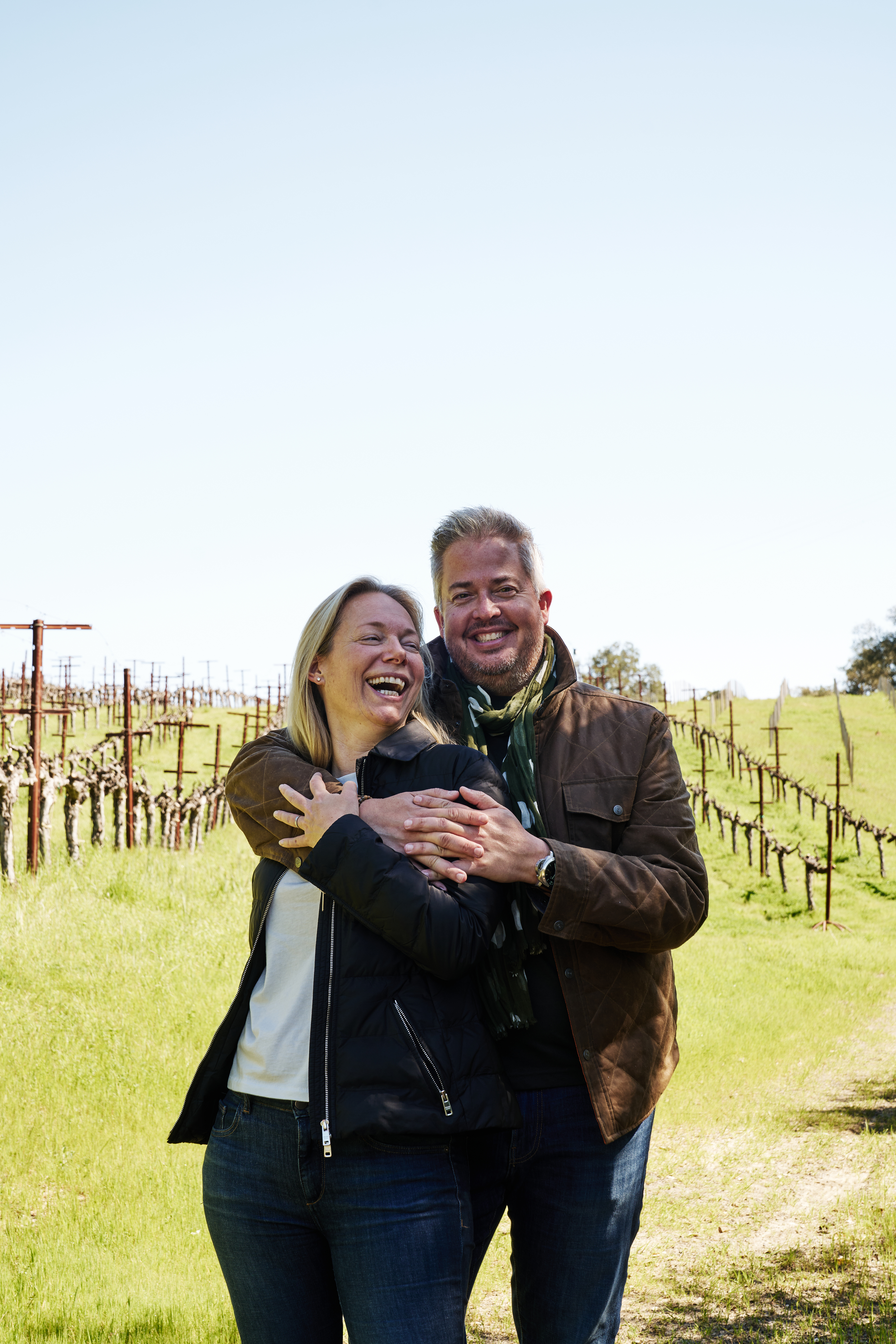18th Apr 2024
“Our goal is to make the best Napa Valley Cabernet Sauvignon of the 1950s,” says Jonah Beer, co-founder with his wife Sara of Pilcrow—a Napa Valley wine label entering its tenth year of production. Pilcrow is among an emerging set of Napa Valley’s throwback producers. These are young winemakers who were first smitten by tasting Napa wines from the 1950s, ‘60s, and ‘70s and want to make those styles of wines that came before the pimped-up, high-octane, muscle car styles that emerged in the ‘90s and early 2000s and took over the show.

Throwback
“The wines that we have set our sights on are the ones made by some of our teachers-in-a-bottle, including Lee Stewart, Bob Travers, Bob Sessions, and Al Brounstein, just to name a few,” Jonah tells me. “First and foremost, these wines share a savoriness. A tension between their fruit elements and their earthier ones. Wines that relish in the tug of war between their California sunshiny cassis/blue fruit and the varietal traits of black olive, green tea, and flowers. Wines that shine, based in part on their low alcohol, low oak, and low pH. Wines that are long-lived and high-toned.”
Jonah cherishes history. He has a particular fascination for typography and ancient typefaces.
“The name Pilcrow is a subtle nod to our thesis about what may happen to Napa if we all embrace speed, technology, progress, and modernity over our shared history and the value that comes with slowing down,” he explains. “Pilcrow is the name of the paragraph symbol (¶). It is the oldest symbol in the written language, and it simply means ‘new chapter.’ This can be a bit on-the-nose in the world of fine wine, meaning each vintage is a new chapter in our history, each vineyard is a unique chapter in the story of Napa, and each bottle brings those chapters together to tell our full and unique story. But also…the pilcrow symbol vanished from usage when the printing press made it impossible for the rubricators to keep up with the new speed of production. Today, the only trace of this once-important part of our language and lexicon is the indentation where a pilcrow should be, but nothing now sits.”

Jonah was introduced to me by Ketan Mody of Beta Wines and Jasud Estate. Ketan shares a vineyard source with Jonah for one of his Beta labels. They also share philosophies when it comes to grape growing and winemaking.
“Seems like each time we’re fortunate enough to share in a bottle of one of the old masters, we remember why we fell in love with this valley—and this variety—so long ago,” says Jonah. “From Diamond Creek to Philip Togni to Mayacamas and back again, these are the wines that first captured us 25 years ago and keep standing the test of time.”
The catalyst for Jonah and Sara was the possibility of losing another old soul.
“It was mid-2013 when one of the valley’s most historic wineries was sold to a couple of gents seemingly intent on modernizing and, Sara and I feared, irrevocably altering what we considered to be one of the grande dames of the valley,” Jonah says. “After a handful of months of general pouting about what I saw as the disappearing history and perspective of the valley and its wines, we decided that we should write and add our own chapter to the valley’s story. Our chapter would find and celebrate distinct vineyard sites. We’d make wines from those singular places that would mark a movement away from the homogeneity of big, sweet, ‘Napa Cabs.’ We’d celebrate all our colleagues that are doing the same. We’d celebrate vintage variation. And we would celebrate the wines, characters, and characteristics of the Napa we first knew, studied, and revered.”
Jonah and Sara are not alone in their pursuit of bringing Napa back to whence it came.
“The last few years have seen a slew of new, old-guard wineries come to light,” Jonah explains. “Ashes + Diamonds, Jasud, and Matthiasson all bring a sincere, old-Napa vibe to today’s landscape. What we have learned is that we can—and should—keep looking for what we can remove from our farming and winemaking that will give our wines greater depth and complexity. This was the central lesson of The One-Straw Revolution and what sits at the core of our approach to the vineyards and the cellar. No irrigation. No till. No hedging. No thinning. Real-deal regenerative farming that relies on the wisdom of the vine to unveil the intricacy that Napa Cab can deliver. Do-less farming and do-even-less winemaking is our ever-evolving proposition.”

One of the first vineyard sources for Pilcrow was the Pym-Rae Vineyard on Mt. Veeder, formerly owned by Robin Williams and purchased by Alfred Tesseron of Château Pontet-Canet in 2016. It was from sourcing this fruit that Jonah met Pym-Rae’s winemaker at the time, Thomas Comme. Like his father, Jean-Michel Comme from Bordeaux, Thomas is an avid proponent of Biodynamic methods. Thomas has since left Pym-Rae and now consults on viticulture for Pilcrow.
Pilcrow currently makes wines from the Archer & Byrd Vineyard on Mt. Veeder, Ghost Block in Yountville, and Granite Lake Vineyard on Howell Mountain. Additionally, in November 2021, Jonah and Sara took over farming an established vineyard in Coombsville: Glass Rock. I asked Jonah what kind of vineyard excites and inspires him and Sara to want to make wine from it.
“I once asked Marco DiGiulio why he liked mountain vineyards so much, and he said, ‘If you’re going to spend so much time in a vineyard, find a magical one.’” Jonah replies. “For us, that search has always started in the mountains where the personality of the terroir is a bit more extreme. A bit pushed to the limits. Take a stroll through Cros Parantoux or Monvigliero, and you will feel the magic Marco referred to so long ago. We’ve been fortunate to be hit by that same feeling here in Napa on legendary soil like the Fay Vineyard, Red Rock Terrace, or Pym-Rae, and we have found that same magic ourselves in Mt. Veeder, Howell Mountain, Coombsville, and Yountville. When that magic hits, you can’t help but think about the wine that can come from it. For us, that means an enological commitment to preserving the vineyard’s personality. To making sure that all we do in the cellar is about adding pixels to the picture and not altering it.”


All the Pilcrow wines are 100% Cabernet Sauvignon.
“Napa is a blessed place that can—and does—showcase a wide variety of wines in a flattering light,” says Jonah. “And whereas we’ve seen brilliance from Alicante Bouschet to Zinfandel in this valley, one lesson has been driven home to us over 75+ vintages of Napa wines: Cabernet Sauvignon can do something absolutely stunning in this small, tucked away corner of the earth. When we first conceived of Pilcrow 10 years ago, our budget was based on the shallow depths of our life savings and our credit card limits. And so, it was suggested by people that we greatly respect that perhaps we should start with a lesser-known and much cheaper grape variety. But, at the end of the day, we were unwilling to acquiesce the viticultural higher ground to those who just had more money than us. If we were going to get in the game, it was going to be to participate at the highest levels, and that meant Cabernet Sauvignon from profound AVAs.”
Jonah and Sara’s single-vineyard Pilcrow wines are beautifully crafted, pure, shimmery Cabernets that demonstrate ripeness as naturally expressed by each vintage and place without trying to shoehorn them into a dogmatic style.
For example, alcohols and weights vary quite a bit, depending upon what the time and place want to give. Production is tiny at only around 100-200 cases of each label, which all feature a unique historic typeface. For lovers of the Napa throwback style, this is a mailing list to jump on now: https://www.pilcrow-wine.com/
–
Article & Reviews by Lisa Perrotti-Brown MW
Photography by Christoffer Lomfors
See more work from Christoffer at lomfors.com by clicking here!

PRODUCERS IN THIS ARTICLE
> Show all wines sorted by scoreMore articles

Cathiard Vineyard New Releases
02nd May 2024
3 tasting notes

Bordeaux 2023 Preliminary Vintage Report and Reviews from Barrel
29th Apr 2024
56 tasting notes

2021 Bordeaux in Bottle and A Modest Proposal
24th Apr 2024
599 tasting notes

Bordeaux 2023 Primeurs Photo Essay
18th Apr 2024
0 tasting notes
Show all articles